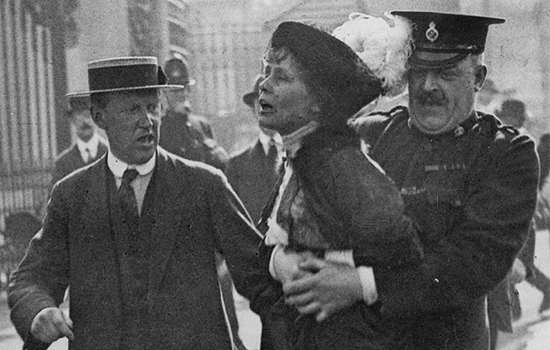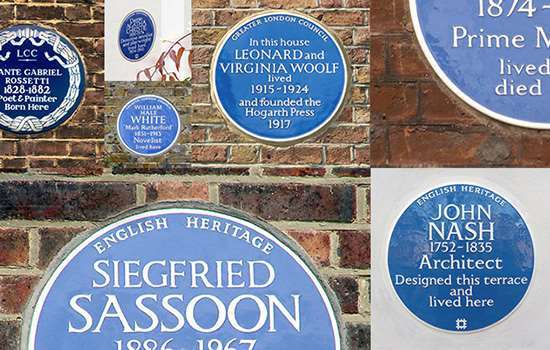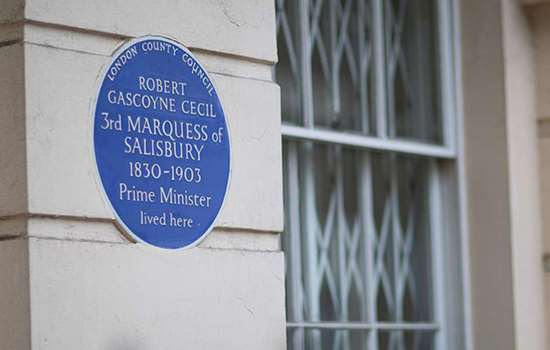BAGNOLD, Enid (1889–1981)
Plaque erected in 1997 by English Heritage at 29 Hyde Park Gate, Kensington, London, SW7 5DJ, Royal Borough of Kensington and Chelsea
All images © English Heritage
Profession
Novelist, Playwright
Category
Literature
Inscription
ENID BAGNOLD 1889–1981 Novelist and Playwright lived here
Material
Ceramic
Novelist and playwright Enid Bagnold wrote daring works featuring strong roles for women. A blue plaque commemorates her at 29 Hyde Park Gate, where she lived and wrote.
Enid Bagnold was born in Rochester, Kent in 1889. She lived in Jamaica for a period of her childhood and learned to ride there. She attended Julia Huxley’s progressive school before moving to Chelsea and studying with Walter Sickert. She made bohemian friends including Henri Gaudier-Brzeska, for whom she modelled. Bagnold had a relationship with magazine editor Frank Harris and worked as assistant editor on his Hearth and Home.
During the First World War, she worked as a Voluntary Aid Detachment nurse in France and London. She first achieved literary attention with A Diary without Dates (1917). Her frankness about her wartime experiences led to her being dismissed from nursing within half an hour of its publication. HG Wells described the book as ‘one of the most human’ written about war.
Bagnold developed close friendships with prominent literary and high society figures including Lady Diana Cooper, Violet Trefusis and Vita Sackville-West. Sackville-West was unimpressed by Bagnold’s marriage to the wealthy head of Reuters, Sir Roderick Jones, in 1920.
Hyde Park Gate and literary success
Bagnold and her husband bought the imposing three-storey house, dating originally from the 1840s, at 29 Hyde Park Gate in 1926 and had Edwin Lutyens remodel the interior. The house featured an enormous nursery for Bagnold’s beloved three sons and daughter; this room also functioned as a lecture hall. Bagnold also had a writing room ‘like a ship’s cabin’. The staircase approaching the room had a newel (end post) topped with a swivelling copper knob so that she could dash downstairs and vault to her desk if inspiration struck during the night.
Bagnold gave grand parties at the house. Managing servants and hosting dinner parties made it difficult for her to continue to find time to write, but she nonetheless published many works, including children’s book Alice and Thomas and Jane (1930) and the bestseller National Velvet (1935). The novel that she considered her best, The Squire (1938), was a daring description of pregnancy and motherhood.
Playwriting
Later, Bagnold turned to writing plays. The first, Lottie Dundass (1941), was a success starring Sybil Thorndike. Despite this early popularity, Bagnold struggled to get her later work, The Chalk Garden, put on. When it finally ran, in New York in 1955 with a set designed by Cecil Beaton, it became a Broadway triumph and was followed by a Haymarket production featuring Peggy Ashcroft and directed by John Gielgud. Critic Kenneth Tynan described it as possibly the finest English comedy since William Congreve.
Bagnold continued to write into her eighties. She was widowed in 1962 and sold the London house – she also had a country home in Rottingdean, East Sussex – eight years later. Bagnold was appointed CBE in 1976 and died in 1981.
Further reading
-
Margaret Drabble, ‘Upstairs, downstairs’, The Guardian (2008)
-
Nigel Nicholson ‘Bagnold, Enid Algerine (1889–1981)’ Oxford Dictionary of National Biography, (2024) (access with a UK public library card)


